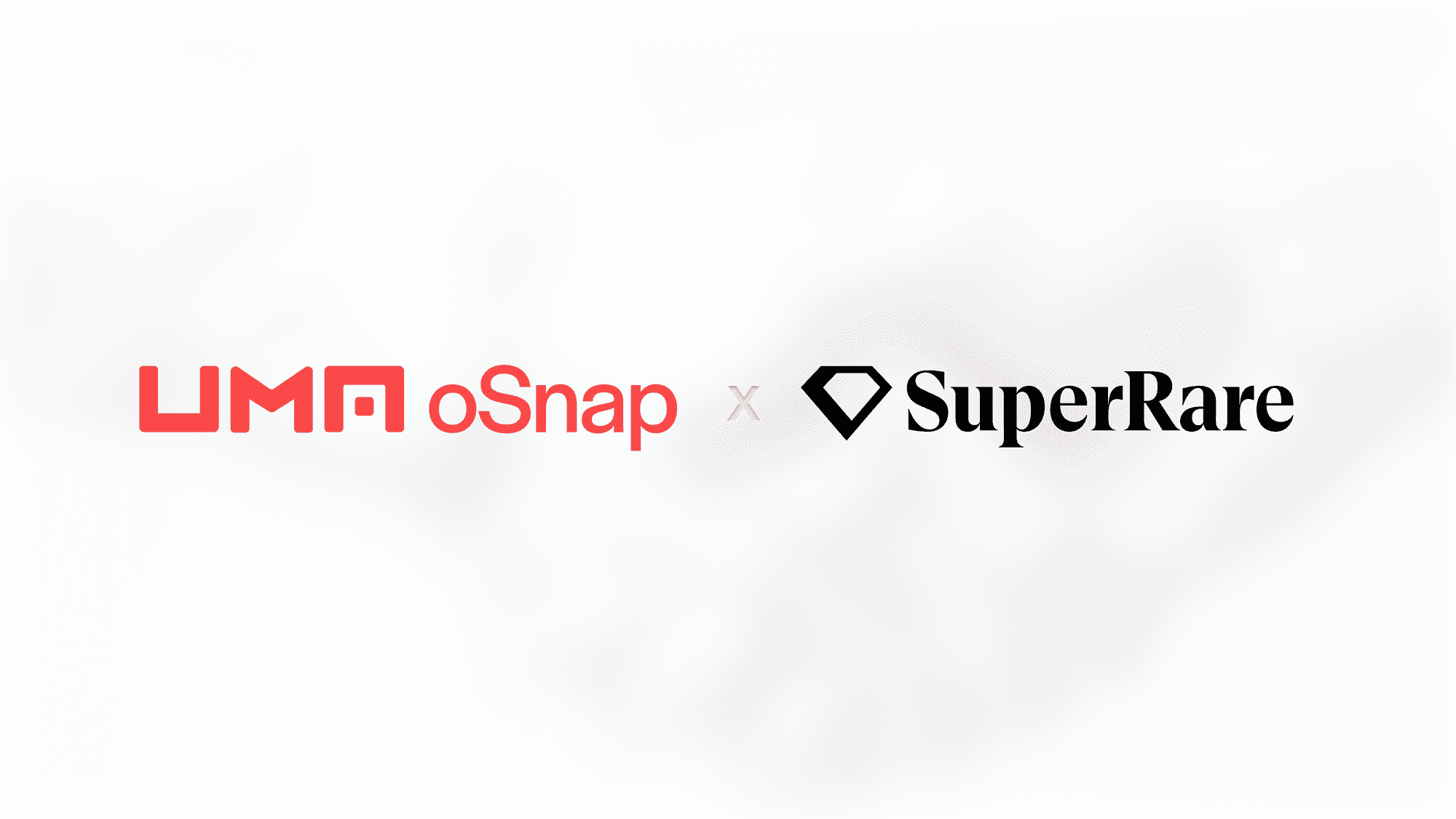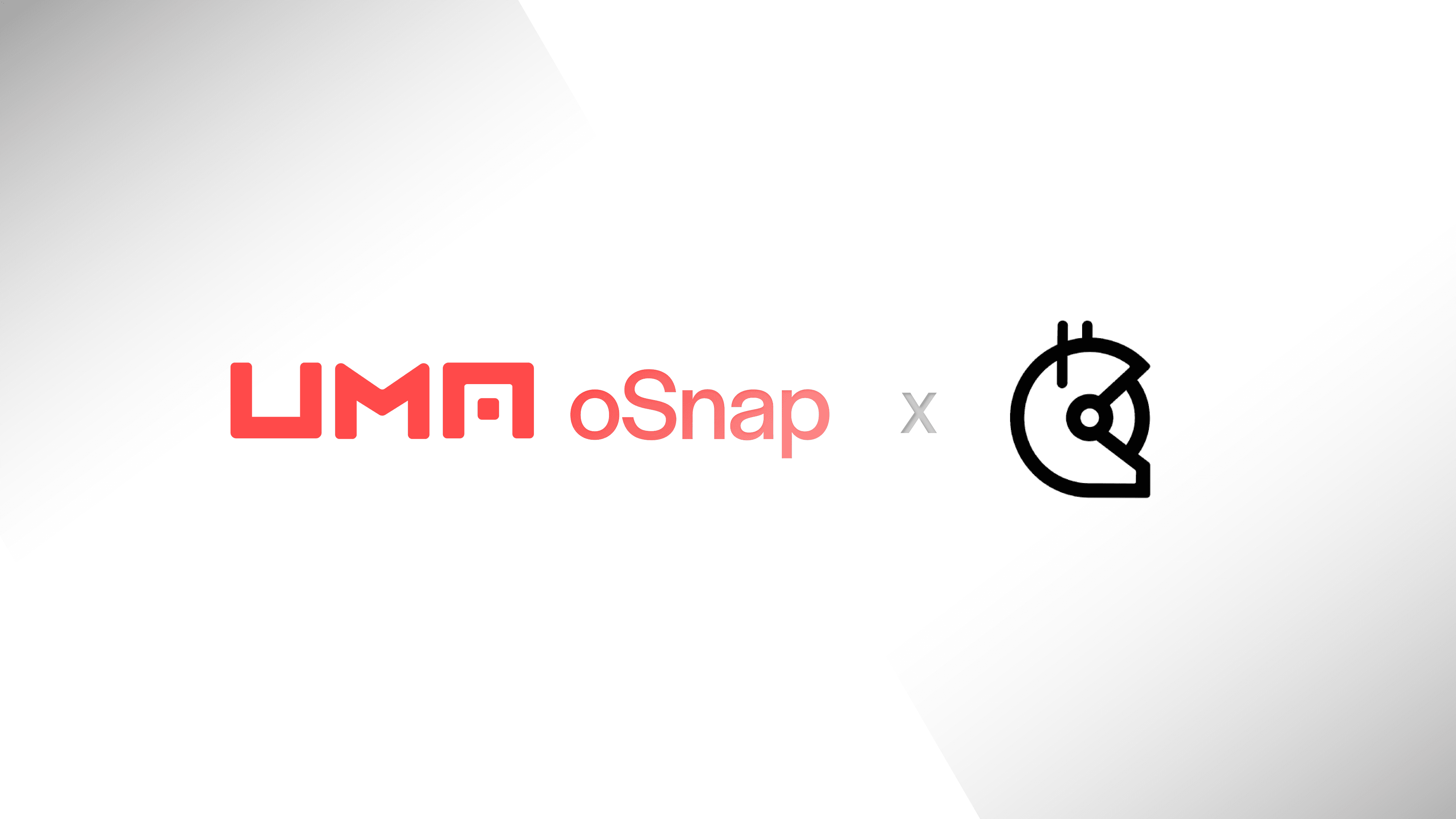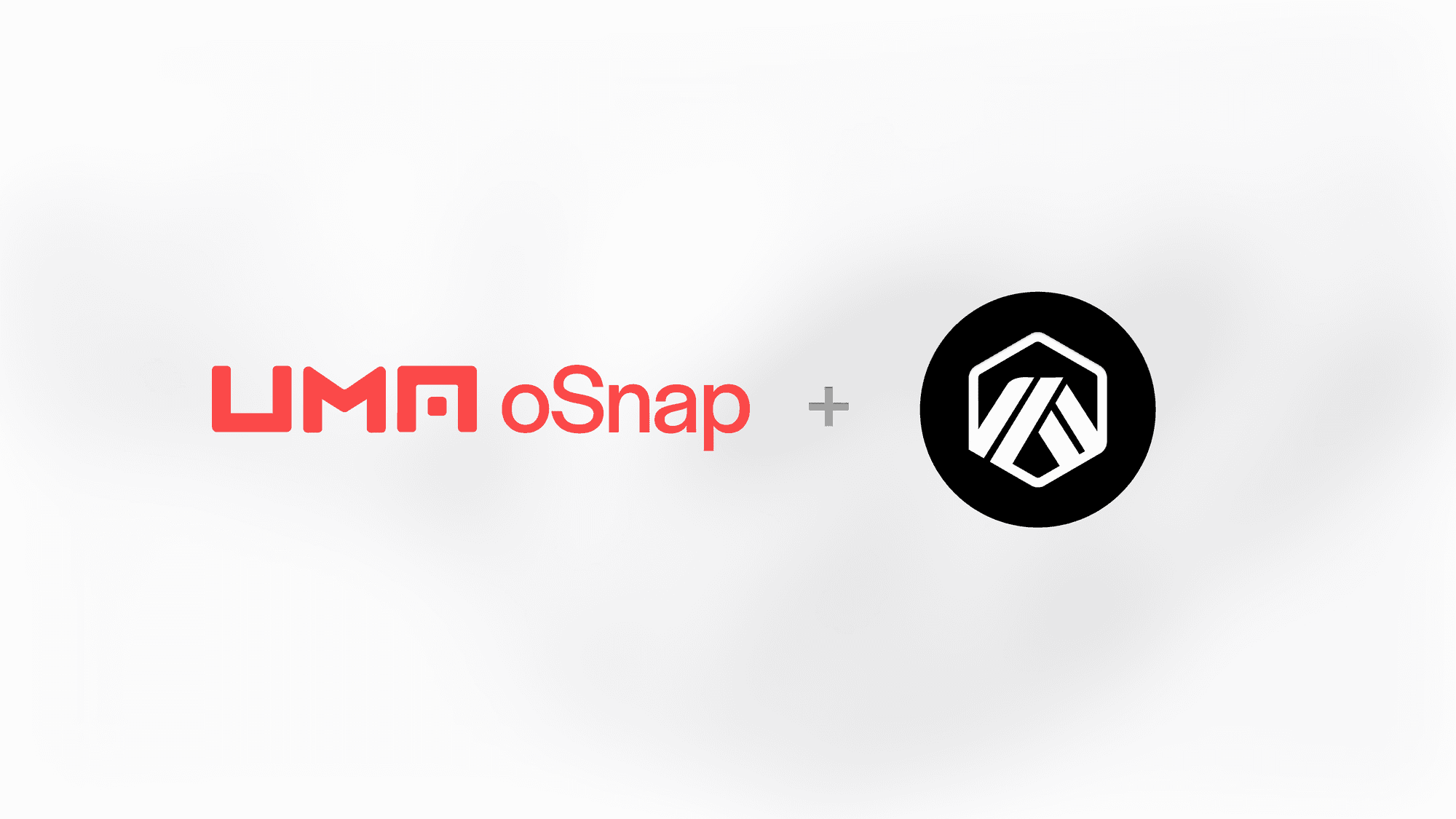Web3 envisioned a decentralized world. oSnap can make it a reality
Tldr; Though many DAOs and crypto projects show great promise today, relying on centralized teams often leads to problems. oSnap can help projects operate smoothly by removing trust in individuals and empowering communities to execute on-chain decisions. In turn, oSnap helps Web3 maintain its decentralized ethos.
Adding oSnap to an existing Snapshot and Safe is fast and free. It has been audited by Open Zeppelin. See the quick-start guide or reach out to integrations@uma.xyz.
Key takeaways:
oSnap, an UMA-powered solution developed with Snapshot and Safe, is a solution for DAOs to execute on-chain governance decisions.
oSnap can prevent common DAO-related issues like treasury mismanagement and delays as it optimizes for transparency and efficiency.
NFT projects could integrate oSnap to give their community members a say in how they are run.
oSnap makes Web3 more decentralized by removing the need to trust central parties.
UMA recently announced oSnap, a solution developed in collaboration with Snapshot and Safe to help DAOs execute on-chain governance decisions. oSnap is a powerful tool that makes DAOs more efficient and trustless. Many new DAOs and other crypto-related projects have emerged in recent years, showing early hints of the potential of decentralized coordination. But as the ecosystem has grown, it’s also become clear that DAOs need a solution to govern themselves in a trustless manner. As the space is in its infancy today, many projects are falling short of their potential because of their reliance on centralized points of failure. oSnap empowers DAOs to coordinate trustlessly, bringing us closer to the Web3 vision of a decentralized world.
A call for decentralization
More than any other period in crypto history, recent events in the space have exposed the risks of trusting centralized bodies. Several major entities like Terra, Celsius, and FTX collapsed as the crypto market trended down in 2022, at once spotlighting bad management practices and the promise of innovations like DeFi.The headline events of 2022 validated Web3 enthusiasts who advocate for transparency and decentralization. But while it’s clear that Web3 needs to be trustless, many projects are yet to achieve trustless governance. This has led to problems, from poor treasury management and decision making to slow execution on decisions.
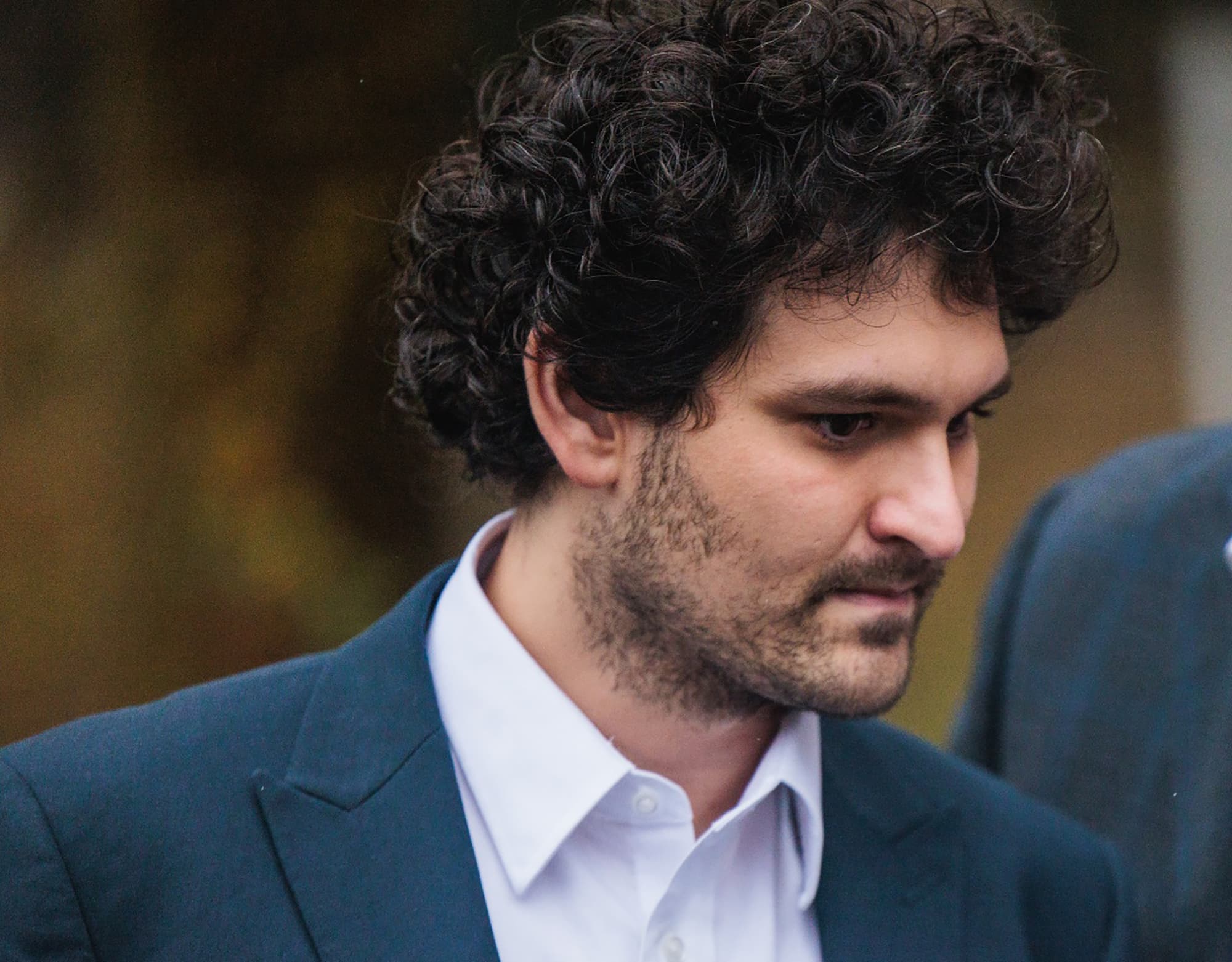
If Web3 projects are to achieve decentralization, communities need to be empowered to take charge of governance. oSnap brings DAOs closer to Web3’s original vision by making communities responsible for governance and execution.
oSnap solves this hurdle for DAOs as it allows them to verify outcomes optimistically. Once a DAO reaches a governance decision through a Snapshot vote, UMA’s OO puts the proposal through autonomously unless someone disputes the decision.
Solving treasury-related issues
A significant issue that the DAO space is grappling with today is treasury management. While many DAOs operate with honest intentions even if they are not trustless, some project teams misuse their treasuries and keep their management practices opaque. Though such cases are rare, oSnap eliminates the possibility of mismanagement altogether.
DeFi hacks have exposed the problems that come with entrusting a small group of individuals with a project’s treasury. One example of such a case centers on Tribe DAO, a group formed out of a merger between Rari Capital and Fei Protocol. When Rari suffered an $80 million hack in April 2022, Tribe DAO went through an arduous governance process with four voting rounds until it agreed to reimburse hack victims five months later.
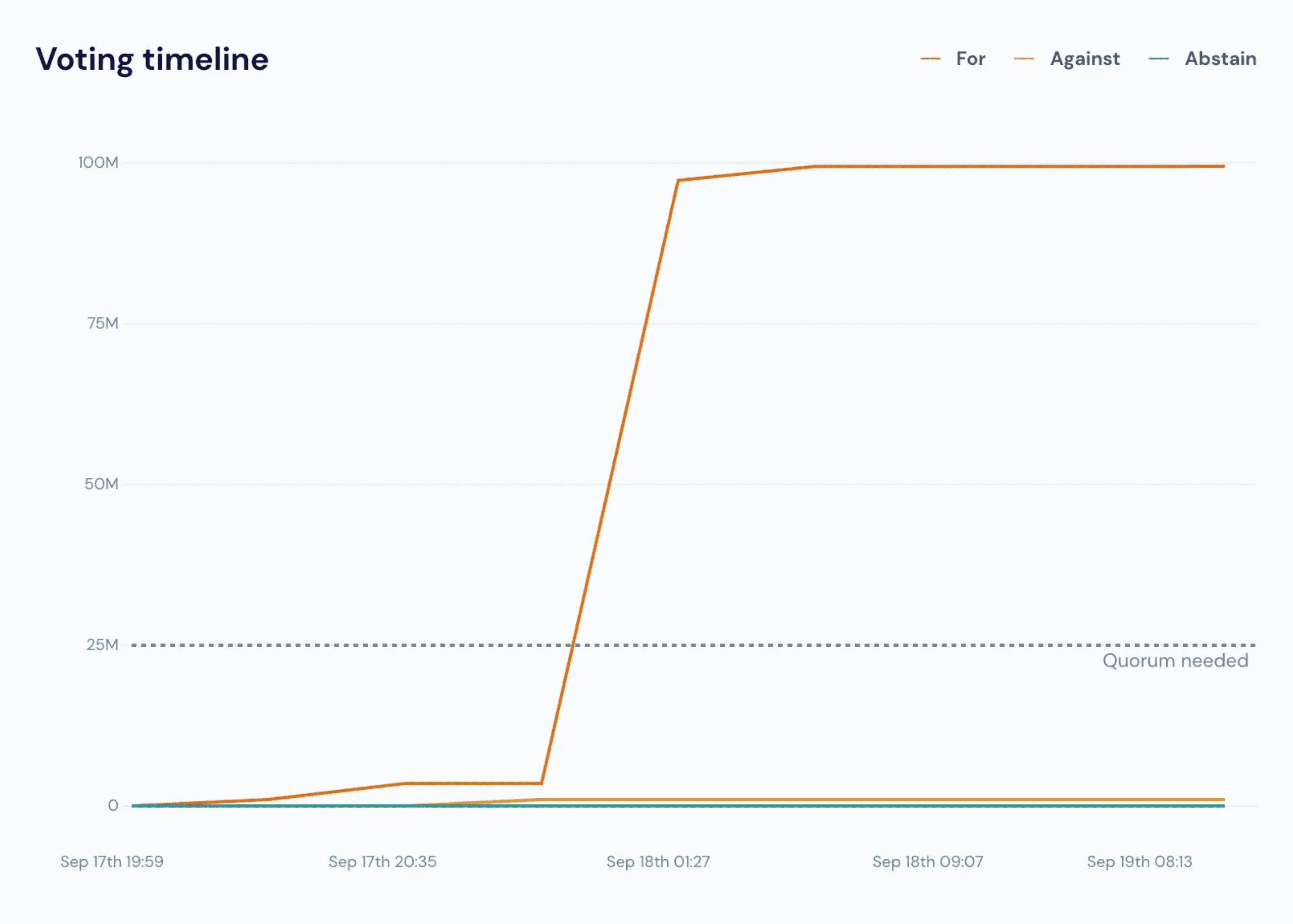
oSnap’s optimistic governance model offers a way for DAOs to coordinate on treasury management and other key decisions. That means it could help communities establish whether funds should be distributed, and it would verify distribution of the funds if the vote passed.
While most Web3 projects operate with integrity, core teams behind DAOs occasionally act with malfeasance. Many DAOs fail due to “rug pulls,” where the core team withdraws a large amount of liquidity from a pool and vanishes. Some teams also misspend their treasuries.
Such issues stem from a lack of transparency in the way DAOs are managed. oSnap solves this problem because it offers communities a way to decide on how treasury funds are allocated. With oSnap, once a Snapshot proposal passes, the transaction can go through unless there’s a dispute. Decisions are executed in a more efficient manner, and the DAO can see how the funds are spent.
Shipping key updates
oSnap does not just improve DAO treasury management. It can also help DAOs become more efficient.
Let’s say a DAO’s community member has put forward a proposal to adjust token emission rates from 2% to 1% annually. The Snapshot vote reaches quorum so the plan can proceed. With oSnap, the rate could be adjusted to 1% immediately after the vote as UMA’s OO would verify the transaction for deploying the code. The transfer would only be stopped if someone raised a dispute, though this is unlikely as they would have to put up a bond, and everyone can see that the DAO agreed to cut the rate to 1%.
This is just one example of how oSnap improves DAO efficiency. DAOs may benefit from using oSnap for other updates like contract upgrades, parameter changes, adjusting listings, and more.
In short, oSnap makes sure DAO governance gets done.
Preventing mistakes
Most DAOs ship updates without optimistic governance today, but this can create risk as they typically rely on a small group of individuals. Many recent DeFi hacks could have been avoided with better OpSec and private key management from core teams. Most teams use multi-sig wallets, but they are not secure. Projects that integrate oSnap will be able to remove their multi-sigs entirely in the future.
Aside from wallet management issues, human error can also lead to costly programming mistakes. The Solana-based decentralized exchange OptiFi highlighted this when its core team inadvertently shut down its mainnet program, locking away $661,000 in funds forever. Though OptiFi made all users whole, the incident showed the risks of relying on individuals to execute updates.
While oSnap does not completely eliminate the chance of human error, it reduces reliance on core teams by handing ownership over to the community. UMA’s OO verifies all transactions, and only one person needs to raise a dispute to stop a transaction.
Today, many DAOs trust their core teams to avoid making mistakes and operate in the group’s best interests. With oSnap, the entire community is responsible for preventing mistakes and ensuring operations run smoothly.
Decentralizing NFT projects (and empowering collectors)
Some of the most significant crypto developments over the past few years have been in the NFT space. After a group of pioneering digital artists like Beeple helped the technology boom in early 2021, many community-focused projects emerged.
One of the NFT space’s dominant trends has been the growth of avatar-based “PFP” collections, projects that loosely borrow from a template set by the early Ethereum collection CryptoPunks.
NFT collectors often invest in the promise of future utility rather than a tokenized image alone. But this is problematic because project teams don’t always deliver on their roadmaps, and collectors don’t always have a say in the utility they’re investing in.
Where DeFi projects issue tokens to community members and ask them to take care of governance, many NFT projects sell (non-fungible) tokens and promise key updates even if they can’t deliver on them.
As NFTs rarely grant voting power in a project, community members don’t always have a say in how the project’s treasury gets used or the project’s future plans.
Examples of contentious decisions NFT core teams can make include migrating assets onto a new blockchain, misusing funds, or even selling the project altogether. Plus, if a core team abandons or “rugs” a project, there’s little a community member can do once they’ve invested their capital.

One notable exception in the NFT avatar space is Nouns, whose DAO members are responsible for governing the project’s treasury and key decisions. This model is arguably the closest to Web3’s decentralized vision in the NFT space today as it adopts a DAO structure rather than a company.
oSnap could be a useful tool for NFT projects willing to be literally community owned. If an NFT project offers voting rights to tokenholders and all decisions have to pass through a Snapshot vote with automated on-chain execution, community members don’t have to wait on the team to deliver on its promises. Instead, they are the ones pushing the project forward.
In other words, oSnap could give NFT collectors true ownership in the communities they invest in.
The future of DAO governance
The DAO and broader crypto space has limitless potential, but over-reliance on centralized parties currently inhibits that potential. Treasury misallocation, delays to shipping updates, and mistakes are common across the DAO space today. In many cases, communities have little say in governance and rely on central teams to execute on their roadmaps, as evidenced in the NFT space today.
oSnap changes this dynamic. By enabling efficient on-chain execution on voting outcomes, the solution brings increased transparency and alignment to a space that prides itself on its decentralized values. With oSnap, community members can have ownership in the projects they love, from DeFi lending protocols to digital art-based NFT ventures.
This is why we think oSnap will push Web3 forward.
If you are interested in integrating oSnap into your project or learning more about the product, please DM on Twitter, join the Discord, or reach out to integrations@umaproject.org.
Words by @dreamsofdefi

